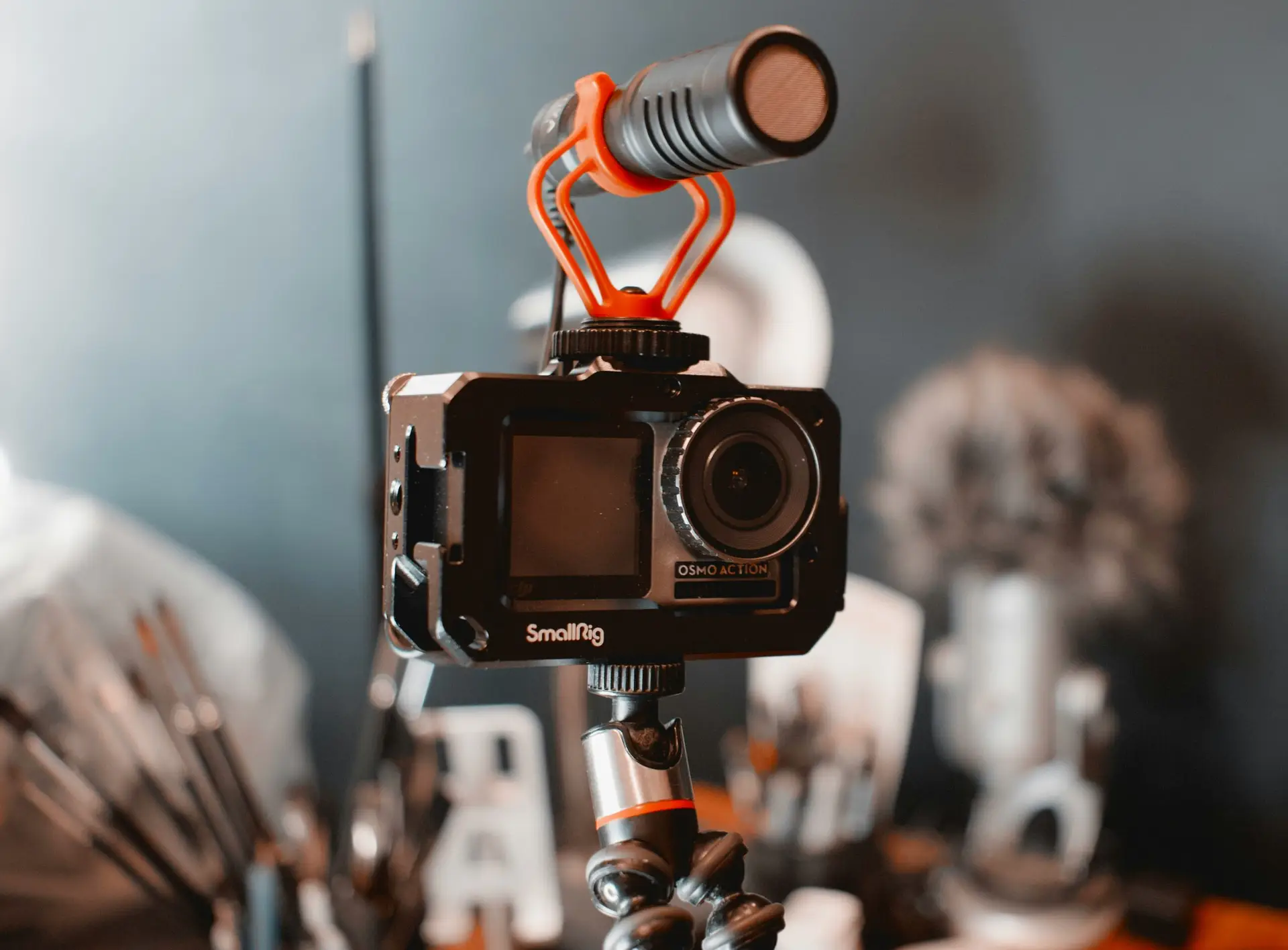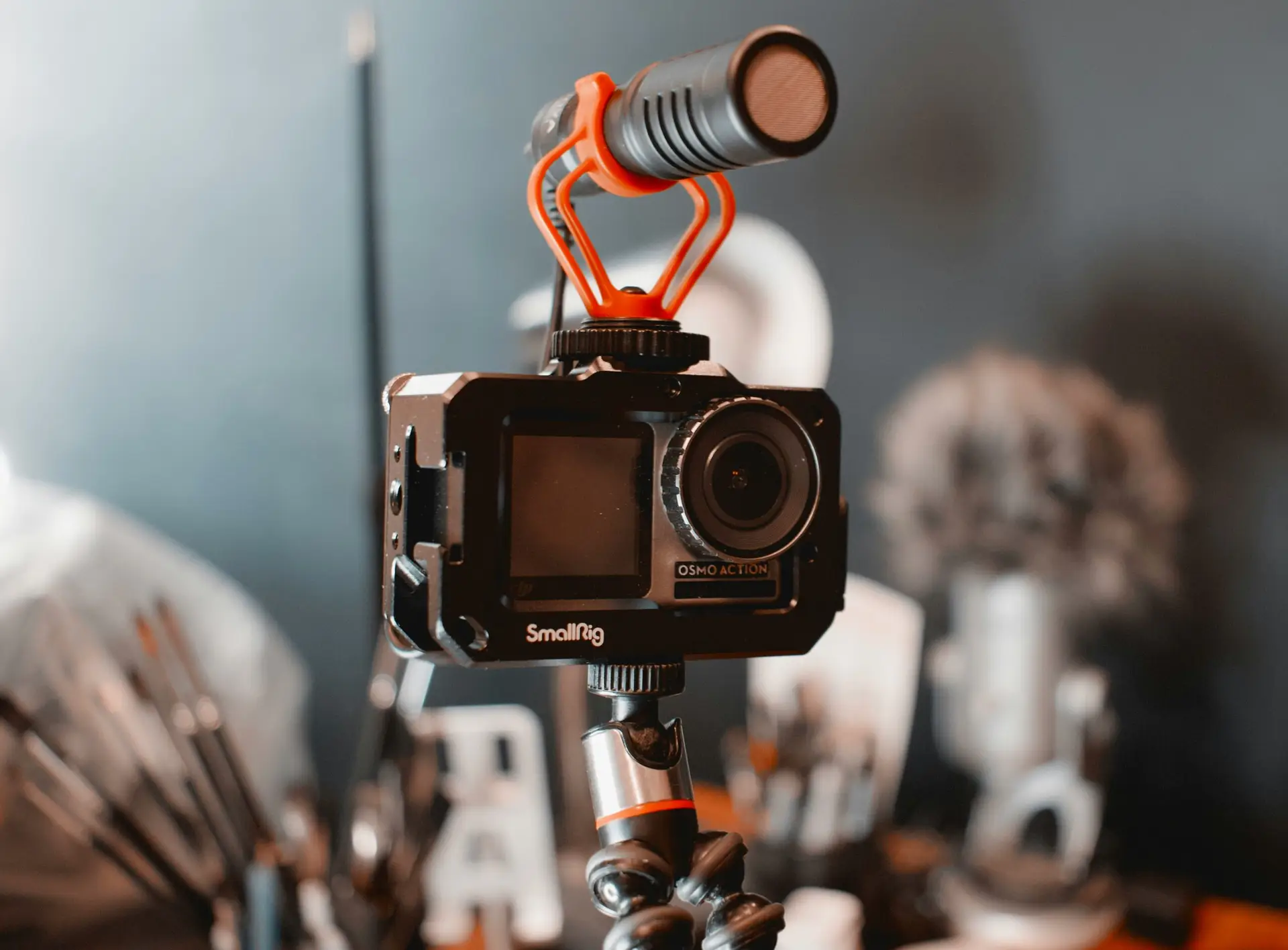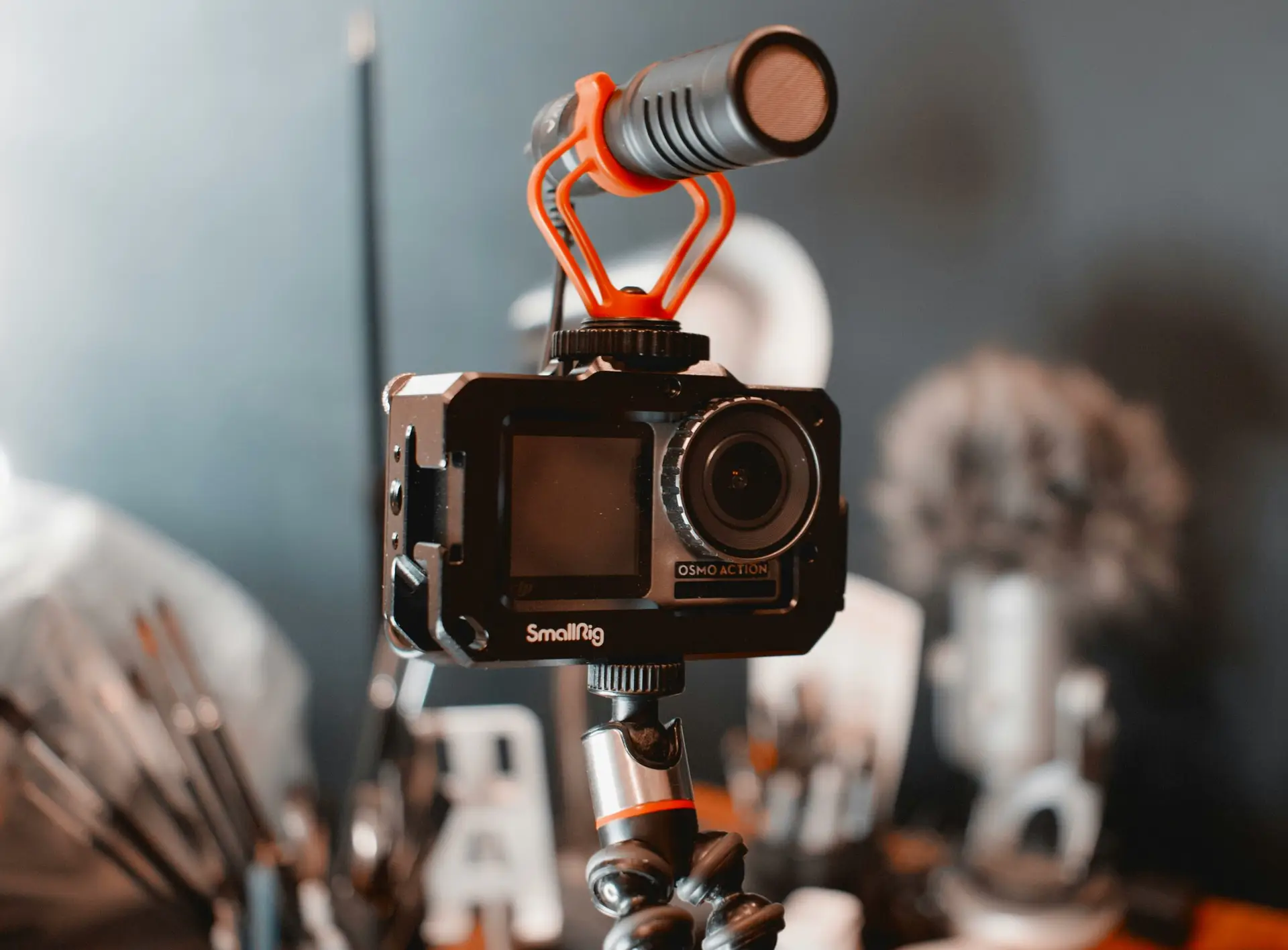Introduction to AI Camera Technology
AI camera technology represents a significant advancement in the field of photography, leveraging artificial intelligence to enhance the photographic experience. At its core, this technology employs machine learning algorithms that analyze and interpret photographic data, allowing for automatic adjustments and improvements that traditional photography methods cannot achieve. The origins of AI in photography can be traced back to the development of computational photography, which aimed to merge software innovation with hardware capabilities to create better images.
Unlike conventional photography, which relies heavily on manual settings and adjustments by the photographer, AI-powered cameras are designed to make intelligent decisions autonomously. These cameras utilize various AI technologies to optimize image quality based on factors such as lighting conditions, subject recognition, and scene complexity. For example, when photographing a landscape, an AI camera can automatically enhance color saturation and contrast to produce a richer image, adjusting parameters much faster and more precisely than any human could.
Moreover, the integration of machine learning allows AI cameras to “learn” from countless images, continually improving their performance through experience. This predictive capability enables these devices to anticipate the photographer’s needs and preferences, offering tailored suggestions for settings and compositions. Such advancements not only streamline the process but also empower photographers of all skill levels to capture professional-quality images with ease.
As AI camera technology continues to evolve, it opens up new possibilities for creative expression and accessibility within the photography realm. By harnessing the power of artificial intelligence, this technology fundamentally transforms how we approach taking and editing photos, setting the stage for a future where enhanced imaging experiences become the norm.
How AI-Powered Cameras Work
AI-powered cameras represent a significant evolution in photographic technology, utilizing advanced algorithms and neural networks to enhance image processing. At the core of their functionality lies machine learning, a subset of artificial intelligence that allows these devices to continuously improve their image-capturing abilities through experience. This is achieved by training complex models on vast datasets containing millions of images, enabling the camera to recognize various objects, scenes, and aesthetic principles.
When a photograph is taken, the AI algorithms analyze the captured scene in real-time. They assess numerous factors, including lighting conditions, composition, and depth of field. By recognizing subjects within the frame, such as people, pets, or landscapes, the camera can optimize settings accordingly. For instance, when detecting a face, the camera may adjust the focus and exposure to ensure the subject is highlighted, ultimately resulting in a more striking image.
Furthermore, AI-powered cameras employ techniques like scene recognition to categorize different environments—be it a bright sunny day at the beach or a dimly lit indoor space. By understanding the context of the shot, the camera can automatically apply enhancements, such as increasing contrast in low-light settings or saturating colors in bright conditions. This automation not only simplifies the photography process for amateur users but also saves professionals valuable editing time.
Another significant aspect of AI technology is its ability to learn and adapt from user preferences. Over time, these cameras can personalize settings based on a photographer’s style and tendencies, enabling users to capture images that align more closely with their artistic vision. As a result, AI cameras effectively bridge the gap between accessibility for novices and sophisticated tools for seasoned professionals, transforming the landscape of modern photography.
Key Features of AI Cameras
AI cameras have ushered in a new era in photography, integrating advanced technology to enhance user experience and image quality. One of the standout features of these innovative cameras is automatic scene recognition. This capability enables the camera to identify various environments, such as landscapes, portraits, or low-light settings, and adjust its settings accordingly for optimal results. By dynamically analyzing the surroundings, AI cameras significantly simplify the photo-taking process for users, making them ideal for both novice and experienced photographers alike.
Another crucial feature is advanced image stabilization, which is particularly beneficial when capturing video or shooting in shaky conditions. Traditional stabilization techniques often compromise image quality, but AI-powered stabilization utilizes intricate algorithms to intelligently stabilize images in real-time. As a result, users can achieve crisp, clear images without the need for cumbersome equipment, enabling a more effortless and enjoyable photography experience.
Additionally, real-time editing capabilities set AI cameras apart from their conventional counterparts. Many modern AI cameras offer built-in editing tools that allow users to apply filters, adjust brightness, and enhance contrast as they capture images. These features not only save time during the post-processing phase but also empower users to experiment creatively with their photos on the spot. By providing immediate feedback and enhancing the creative process, real-time editing transforms the way users approach photography, encouraging them to explore various artistic expressions.
In summary, the key features of AI cameras, including automatic scene recognition, advanced image stabilization, and real-time editing capabilities, revolutionize the art of photography. These advancements not only improve image quality but also greatly enhance the user experience, allowing for more accessible and enjoyable photography for individuals of all skill levels.
Benefits of Using AI in Photography
The integration of Artificial Intelligence (AI) into photography presents numerous advantages that significantly enhance the art and science of capturing images. One of the most notable benefits is the improved image quality achieved through intelligent algorithms that analyze scenes, optimize settings, and even suggest ideal compositions. These advancements enable photographers to produce high-resolution images that are not only aesthetically pleasing but also accurately represent the subject matter.
Furthermore, AI technology has drastically reduced editing time, allowing photographers to focus more on creativity rather than labor-intensive adjustments. Advanced editing tools powered by AI can automatically enhance images, correcting exposure, contrast, and even eliminating distracting elements with minimal user input. This efficiency is particularly beneficial for professional photographers who must juggle multiple projects and deadlines, ultimately streamlining their workflow.
AI also fosters enhanced creativity by providing new features and options that were previously unavailable. For instance, AI-generated suggestions can inspire photographers by presenting novel perspectives or techniques to explore. By analyzing vast datasets of photography, AI can help users discover trends and themes that resonate with audiences, thus encouraging artistic growth and exploration.
Moreover, AI technology has made photography more accessible to novice photographers. Many user-friendly applications equipped with AI capabilities allow beginners to achieve impressive results without extensive training or experience. As a result, individuals who may have previously felt intimidated by technical aspects of photography can now experiment and express themselves creatively, tapping into their potential at a much lower barrier to entry.
In summary, the adoption of AI in photography not only enhances image quality and expedites editing processes but also fosters creativity and democratizes the art form for a wider audience. The transformative impact of AI technology is paving the way for a new era in photography, inviting both seasoned professionals and newcomers to explore the visual world more deeply and innovatively.
Comparative Analysis: Traditional vs. AI Photography
Photography, as an art form and a technical discipline, has witnessed significant transformations over the years. Traditional photography relies heavily on the skills and creativity of the photographer, using mechanical cameras, film, and manual editing techniques to capture and enhance images. The photographer’s ability to adjust settings like aperture, shutter speed, and ISO directly influences the final output, thereby emphasizing a personal touch. However, this approach often requires extensive training and experience, limiting access to those who can invest time in mastering these skills.
Conversely, AI photography leverages advanced algorithms to automate many of the processes involved in image capturing and editing. By using machine learning, AI systems can analyze scenes, recognize subjects, and determine optimal settings without the photographer’s direct input. This can lead to quicker results and an enhanced user experience, allowing for instantaneous adjustments and real-time feedback. While the ease of use presents advantages, there is concern that it might overshadow the traditional skills long valued in photography.
One of the strengths of AI photography is its ability to learn from vast datasets, enabling it to evolve and improve continuously. Algorithms can enhance image quality, apply stylistic edits, and detect imperfections with remarkable accuracy. However, there are limitations to this technology. AI may struggle with creative nuance and the subtlety of human emotion that traditional methods often capture effectively. Furthermore, the reliance on AI may diminish the photographer’s role, potentially devaluing the human element that brings unique perspectives to visual storytelling.
Ultimately, AI technology will likely shape the future of photography by complementing traditional methods rather than fully replacing them. Photographers may find themselves utilizing a hybrid approach, combining established techniques with AI capabilities, thus developing new skills that redefine the photography landscape.
Trends and Innovations in AI Camera Tech
The landscape of photography is undergoing a profound transformation, driven by advancements in artificial intelligence (AI) camera technology. One of the most significant trends is the rise of computational photography, which uses algorithms to enhance image quality and allow for creative effects that were once unattainable. This technology enables cameras to process multiple images simultaneously, extracting elements from each to produce one cohesive, high-quality photograph. This results in enhanced detail, color accuracy, and dynamic range, allowing photographers to capture stunning images even in challenging lighting conditions.
Additionally, AI-driven features in cameras have greatly improved user interfaces. Intelligent settings and automatic adjustments based on scene recognition are empowering users to focus on composition rather than technical settings. For instance, AI can identify whether a scene includes people, landscapes, or night settings, and automatically adjusts the exposure, ISO, and shutter speed accordingly. These innovations are making high-quality photography more accessible to both professionals and amateurs, eliminating some of the technical barriers that often deter potential photographers.
Moreover, emerging technologies such as real-time image processing and enhanced focus algorithms are paving the way for instantaneous editing capabilities, thereby streamlining the workflow for photographers. Integration of AI also extends to facial recognition and object tracking, ensuring that subjects remain in focus and well-exposed even during dynamic shoots. The introduction of smart features like voice commands and touchless controls is further enriching the user experience, elevating how photographers interact with their equipment.
As AI camera technology continues to evolve, future innovations may include deeper learning capabilities that will adapt to the individual photographer’s style, personalizing settings and suggestions in real time. The synergy of creativity and technology is reshaping the photography industry, inspiring new artistic possibilities and making it an exciting time for both budding and seasoned photographers.
The Future of AI Camera Technology
The future of AI camera technology holds immense promise, poised to fundamentally transform the landscape of photography. As advancements in deep learning continue to evolve, we can expect cameras to become increasingly intuitive, allowing for more refined automated features that cater to the specific needs of individual users. Machine learning algorithms will not only enhance image quality but also adapt to varying shooting environments, ensuring optimal settings are generated based on contextual analysis.
In the realm of augmented reality (AR), AI camera technology is likely to blur the lines between reality and imagination. The integration of AR features will enable photographers to use their cameras as advanced tools for storytelling, placing virtual elements seamlessly into real-world scenes. This capability will revolutionize how creative professionals visualize their projects, fostering innovative approaches to photography. Furthermore, users will have access to real-time feedback and enhancements, allowing for a deeper engagement with the photographic process.
Personalized photography experiences are another exciting prospect brought about by AI advancements. With the rise of collaborative platforms, photographic communities will thrive as AI tools analyze individual preferences and suggest tailored content, styles, or editing techniques. These innovations can lead to more unique and individualized outputs, allowing photographers to express their creativity like never before. As AI continues to learn from user behavior and preferences, personalized assistance will evolve, making photography more accessible to both enthusiasts and professionals alike.
In conclusion, the future of AI camera technology promises to revolutionize how we capture, interpret, and experience photography. As we witness the phenomenal growth of deep learning, augmented reality, and personalized solutions, the photographic journey will undoubtedly become more dynamic—empowering photographers to explore the art form with unprecedented ease and creativity.
Challenges and Considerations
The integration of AI camera technology into the photography landscape presents several challenges and ethical considerations that merit thorough examination. One of the most pressing issues is privacy. As AI cameras become increasingly capable of recognizing faces and capturing detailed information about individuals without their consent, there are growing concerns regarding surveillance and the potential for misuse of personal data. Photographers and companies using AI technology must be vigilant in ensuring that their practices comply with privacy laws and respect individuals’ rights, which fosters trust and protects against misuse.
Data security represents another significant challenge. AI cameras often rely on cloud storage and processing to deliver their functionality, which can expose sensitive information to potential hacking and unauthorized access. Photographers and developers of AI technology must implement robust security measures, including encryption and secure transmission protocols, to protect users’ data and maintain the integrity of their systems. Ensuring that data is handled responsibly will not only safeguard individuals but also bolster public confidence in AI camera technology.
Moreover, the adoption of AI-driven photography raises concerns about the potential erosion of traditional photography skills. As these advanced technologies become more mainstream, aspiring photographers might overly rely on automated features at the expense of mastering fundamental skills, such as composition, lighting, and manual settings. It is essential for both educators and professionals to promote a balanced approach that recognizes the value of traditional techniques while embracing technological advancements. Encouraging individuals to develop their photography skills can lead to a richer, more diverse creative landscape where technology complements human artistry.
In this evolving environment, it is crucial for creators and consumers alike to engage in constructive dialogue about the responsibilities that accompany the deployment of AI camera technology. This ongoing conversation will help chart a responsible path forward that respects privacy, ensures security, and appreciates the craft of photography.
Conclusion: Embracing the AI Photography Revolution
The advancement of AI camera technology represents a significant evolution in the field of photography. Throughout this blog post, we explored the myriad ways artificial intelligence is transforming how images are captured, processed, and shared. From automated scene recognition to intelligent editing tools, AI is enhancing photographer capabilities and streamlining workflows, thereby reshaping the landscape of visual storytelling.
One of the most notable benefits of AI in photography is its ability to assist both amateur and professional photographers. With features such as automatic focus adjustments and smart exposure settings, photographers can achieve high-quality images with minimal effort. Furthermore, AI-driven software solutions provide advanced editing options that allow for creative expressions beyond traditional methods. These innovations are not merely enhancements; they signify a shift in how we approach photography as an art form.
In conclusion, the integration of AI into photography offers exciting possibilities that can elevate visual storytelling to unprecedented heights. By staying informed about emerging AI innovations and actively exploring their applications, photographers can enhance their skills and enrich their creative process. The future of photography is indeed bright, driven by the dynamic synergy of human creativity and artificial intelligence.




